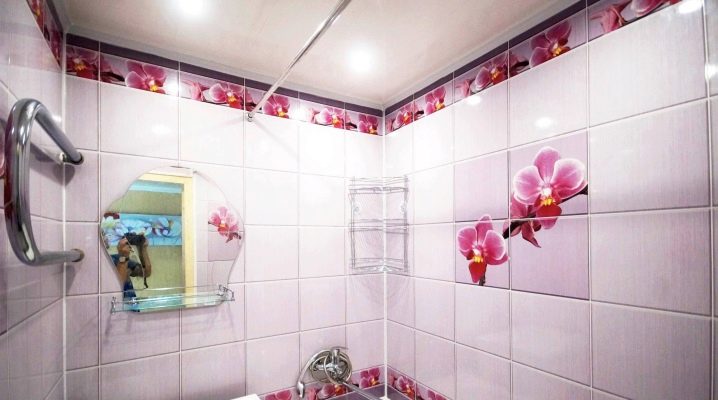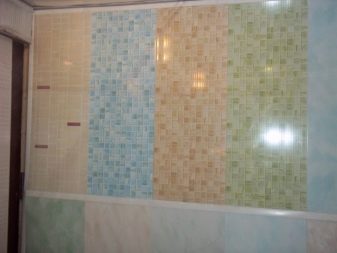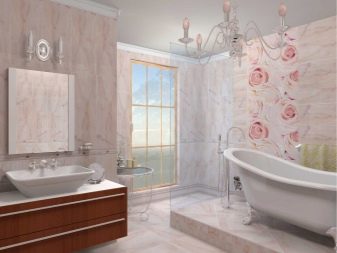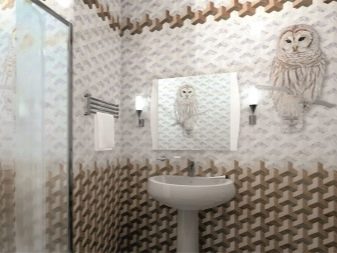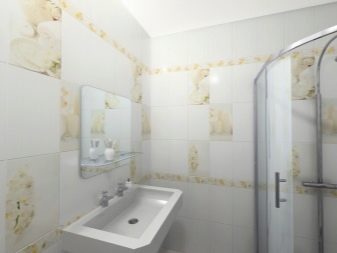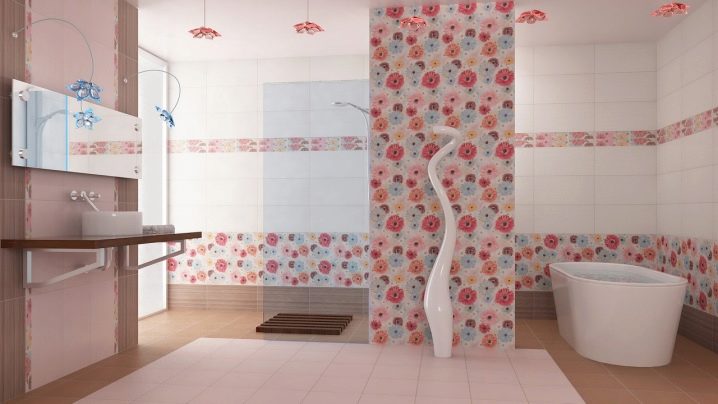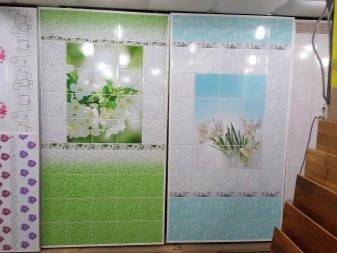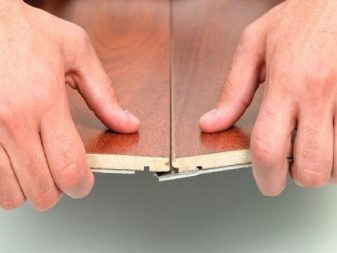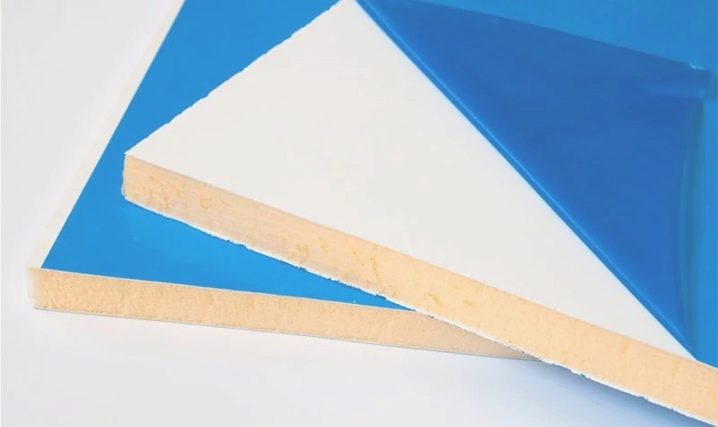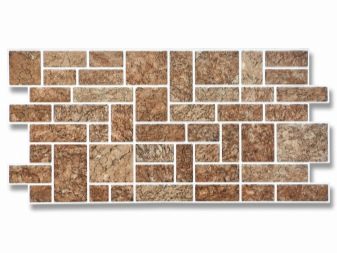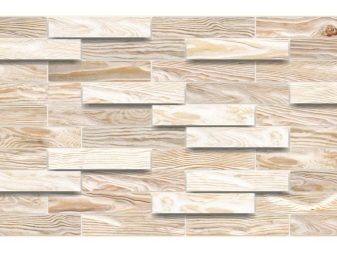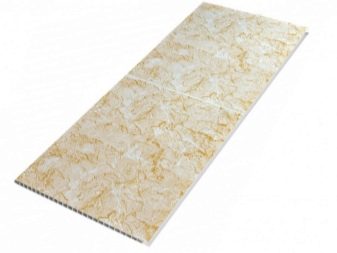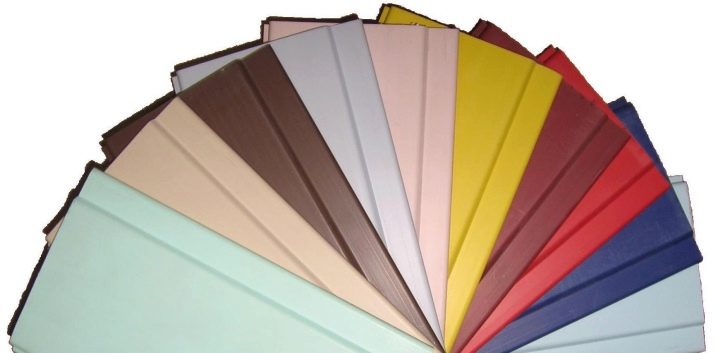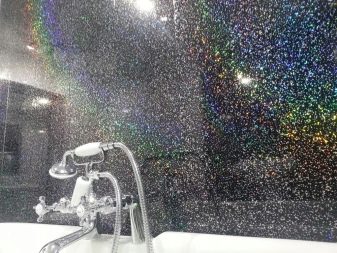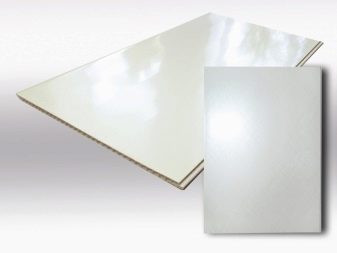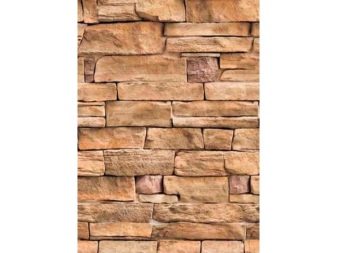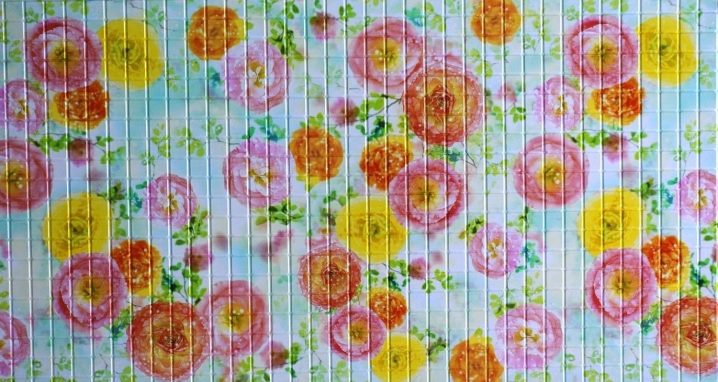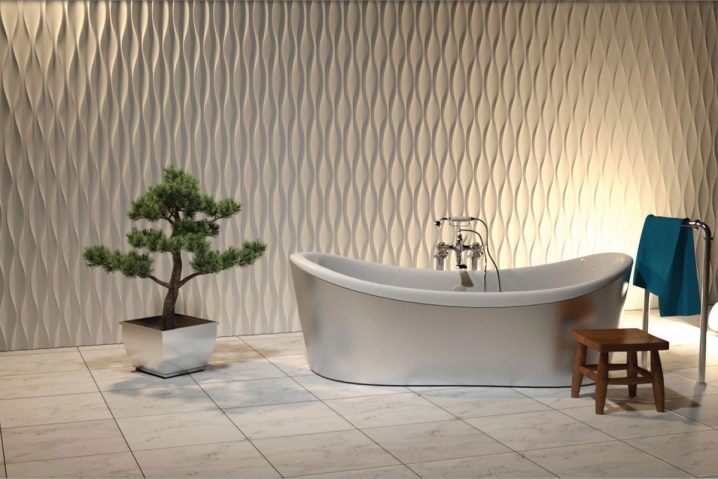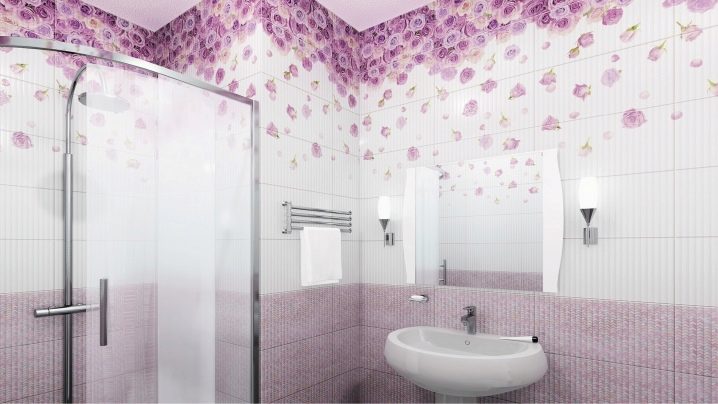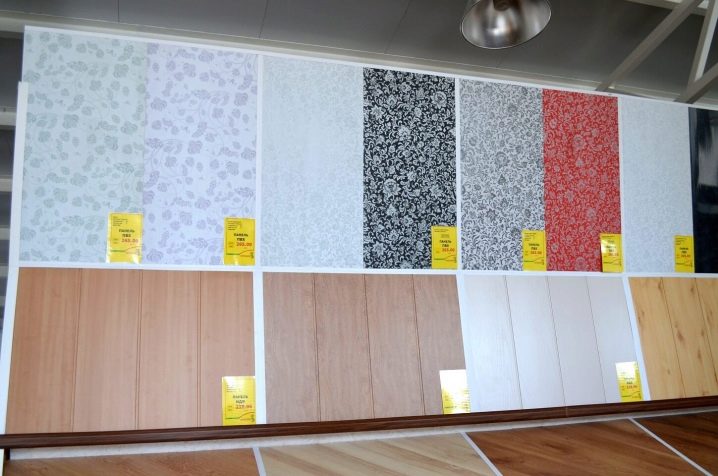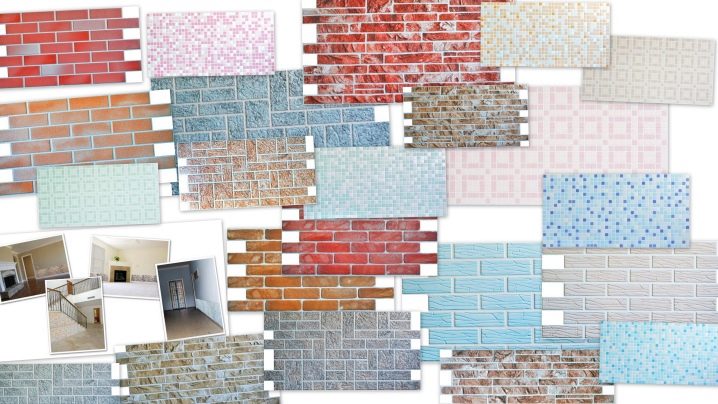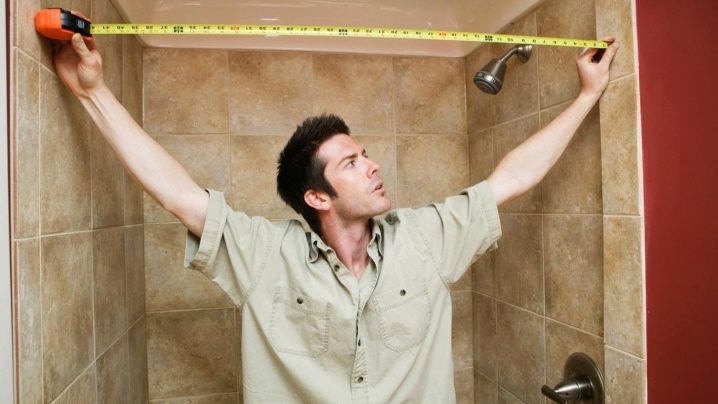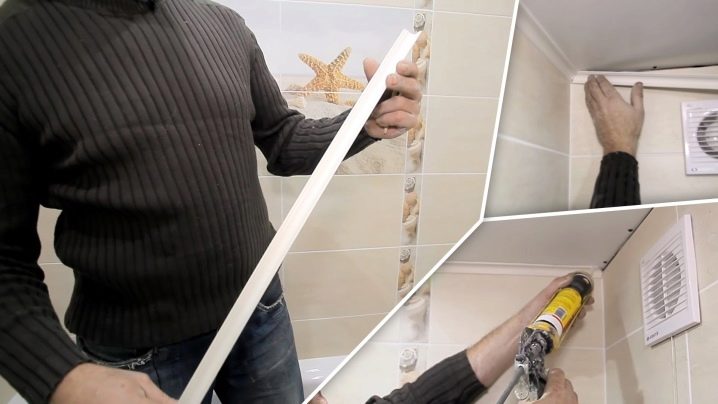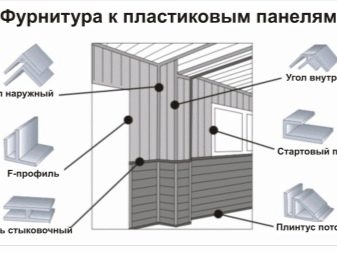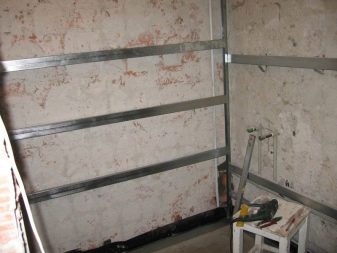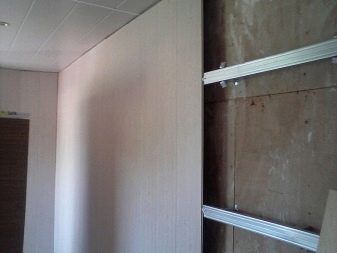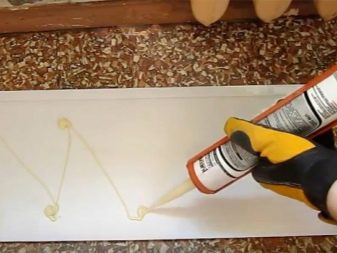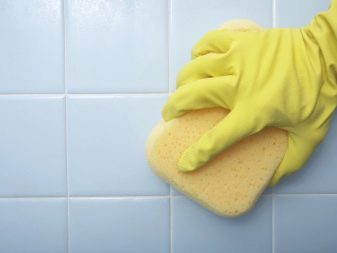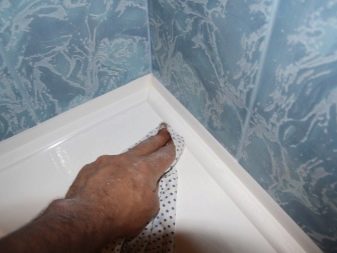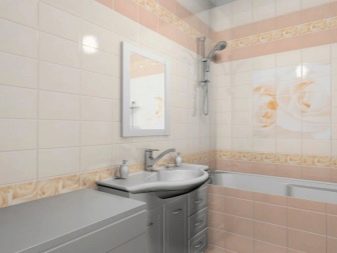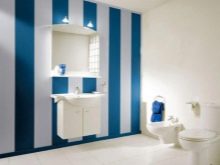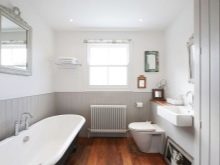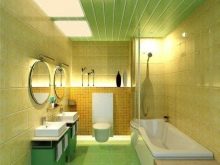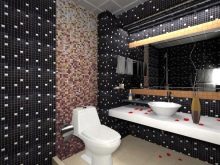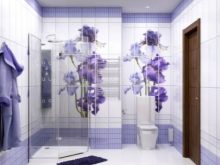PVC panels for the bathroom: advantages and disadvantages
Plastic finishing is no longer a novelty. However, few people know how rich is the range of PVC panels, what are their positive and negative sides. In addition, they can dramatically change the interior of the bathroom.
Material Features
PVC panels are one of the types of polymeric materials for finishing. Such a panel is a sheet, which is based on polyvinyl chloride coated in the form of varnish. This substance can be called truly unique, since it is used to make clothes, shoes, edges and flooring for furniture, parts for household appliances, packaging, various films and sheets for finishing the ceiling and walls, as well as pipes and much more.This is possible due to its properties such as resistance to chemicals (alkalis, oils, and some acids, solvents) and water, incombustibility. Such a light and heat resistant material is a dielectric and can be easily processed.
Repeatedly there are disputes about the safety of the use of polyvinyl chloride. If high quality raw materials were used for its production, there is nothing to worry about. In the production of this compound, toxins are usually released, however, as with its disposal, it is therefore important that the entire process takes place under close supervision.
Advantages and disadvantages
As a facing material for a bathroom, plastic in many ways can compete with everything else, for example, ceramic tile or plaster. Although it would be completely wrong to compare them, since they are still different in their physical characteristics.
Let's look at what are the advantages of PVC tiles.
- conditions in the bathroom rarely exceed the maximum permissible, so this finish will last a very long time;
- the presence of an internal air gap (her,by the way, it can be filled with foam materials) allows to improve sound and heat insulation;
- do not allow the spread of flame (non-flammable panels);
- large selection of color, type of coating and size of panels;
- safety (lack of released toxic substances with control at all stages of production);
- speed of installation and ease of transportation (due to the low weight of the products);
- the ability to hide the imperfections of the walls or the ceiling, save on materials for leveling their surface, place the mortise fixtures on the surface, and hide the wiring inside;
- ease of cleaning and care;
- low price has become synonymous with accessibility (compared to the same tile).
As we can see, the advantages of the panels are many, which is why they are so popular.
Under the weight of a positive impression, not every buyer thinks that they have weak points.
- low strength (this is due to the thinness of the canvas and low density);
- there are difficulties during installation, if the plumbing is located close to the wall;
- in case of insufficient sealing of the joints and the appearance of cracks under the panel coating, condensate may accumulate, which contributes to the appearance of mold;
- reduction of useful space, since a special frame is needed for secure fixing of the panels - this method of finishing is not suitable for narrow bathrooms, where the bill goes to centimeters.
All problematic features (except increase in strength) can be resolved by applying an alternative type of fastening or by conducting antifungal treatment. A damaged item can always be removed and replaced with a new one. Beautiful, moisture-resistant, flexible, high-quality panels will decorate your bathroom.
Kinds
As already mentioned, PVC panels are available in a wide range.
All PVC panels for the bathroom can be divided into:
- wall mounted;
- ceiling.
They differ in parameters. Wall plastic panels are shorter and more dense (thicker). Material of greater width (in the form of sheets) is more often used for wall decoration, in order not to create additional difficulties during installation.
Depending on the method of connecting the panels to each other, they can be divided into two types.
- Seamless. The connection occurs in such a way that the seams between them are almost invisible.
- Relief. Some connection methods make the joints more visible.These include models with a facet, the location of which forms a kind of striped pattern.
According to the structure of the panel, they can be single-layer or so-called sandwich panels - they consist of two layers of polyvinyl chloride, between which a filler is injected (polystyrene foam or polyurethane foam). Multi-layered panels, as a rule, can withstand a large load (for this, stiffening ribs are inserted into them) and provide greater protection against cold and noise.
Dimensions
Depending on the size and shape of the panel can be divided into several types.
- Leafy - they have the most impressive size. The thickness of such panels is small (3-6 mm), which makes it possible to install them in different ways, but at the same time makes them vulnerable, since even a minor blow can leave a dent or pierce it through.
- Rack - in fact, they can be called leafy, only narrower (they are even confused with clapboard). Dimensions of wall panels vary from 150 to 300 mm in width and up to 3000 mm in length. Thickness is about 6-10 mm. Ceiling panels are thinner and longer (up to 10 meters). Used most often because they are easier to install than wider ones.And at the same time, their installation takes less time than the smaller elements. The arrangement can be horizontal, vertical or diagonal.
- Tiled - their name speaks for itself. They can be both square and rectangular. The size on one side can reach 1000 mm. Their placement on the wall takes more time, but gives a greater decorative effect, since you can combine products of different colors (like a mosaic). Yes, and the location can be different - straight or diagonal (relative to the floor), even rows or offset.
It is impossible to give a full dimensional grid, since domestic and foreign manufacturers have different standards. However, fitting a certain size does not cause trouble. Making the calculation and the appropriate markup, very thin products can be cut even with a construction knife.
Colors
The palette of plastic panels corresponds to the world-recognized catalogs of RaColor and RAL and can include both basic red, yellow, blue, black, and their various shades (more than two hundred names). Polyvinyl chloride itself is colorless, with a slight white tinge.It acquires color by dyeing in production or as a result of lamination.
Depending on the appearance of the panel can be divided into:
- monophonic;
- with an image.
Elements with a pattern can be:
- imitation of wood, metal, stone or any other material;
- pattern (floral, geometric);
- photo printing (they can be unrelated to each other or make up a large panel);
- interspersed with (for example, sparkles).
The surface of each element can be:
- smooth (matte, glossy, metallic or mother of pearl);
- textured (wood or stone - if you hold your hand on it, you can feel wood fibers, uneven minerals).
To improve the appearance, you can use decorative stickers. Given the constant contact with saturated moisture air, it is better if they are vinyl. Also as a decor, you can use lamps that are acceptable for a bathroom, and they can be embedded not only in the ceiling, but also in the walls.
Separately, you can select the panel with a three-dimensional effect, which is achieved in two ways:
- using a graphic pattern;
- special convex parts of elements.
Despite the impression, it is better to place them on one side in such a way as not to overload the visual system.
How to choose?
Plastic can be both low and high quality. Before purchasing, check that the seller has the necessary supporting documentation. Lower cost compared to the average for the market - an occasion to think. It is important to consider the feedback and reputation of the manufacturer.
To check the strength, you need to press on the plastic or try to bend the corner. If stored improperly (for example, from exposure to sunlight), such products become fragile and may begin to crumble.
The first thing you need to pay attention to the surface of the panel. It should not be dents, scratches and other defects. The edges should be smooth, without chipping. Be sure to check how well the elements fit together. To do this, take samples and try to connect them.
To lay the fabric well, it must be perfectly smooth. You can check this parameter by placing it on a flat surface, such as a table. If you see a gap between them - refuse to buy.Particular attention should be paid to the picture, if available. Check the brightness of colors, if not on the whole package, then at least on two or three top. If a picture should form from the panels, you need to make sure that all the details from it are available. Coloring should be uniform throughout the area.
When choosing a color, you need to take into account its properties such as the ability to reflect. With the help of a color you can visually change the size of the room. For the bathroom is very important (especially in the Khrushchev or other small apartments). Rate indoor lighting. The glossy surface reflects the light well, so the room will be lighter.
Additional elements in the form of baseboards and corners to them are best purchased immediately if you want their color to match. In addition, the choice is influenced by what function the panel will play. If protection of walls from moisture is needed, ordinary panels are enough. For insulation and sound insulation, it is better to give preference to a multi-layered variant with intermediate filler. For a perfectly flat surface suitable sheets that provide seamless connection.
The length of the panels depends on their location.The location of the panels on the long side of the working surface requires appropriate elements. Some difficulties may arise during transportation.
How to calculate the quantity?
Calculate the number of panels for the bathroom as follows:
- To do this, calculate the area of the working surface. For example, take a bathroom with walls 3 and 5 meters and a height of 2.5 meters.
(3+5+3+5) *2,5=40.
- Then we calculate the area of the door and subtract this value from the total area of the walls.
2,2*0,9=1,98
40-1,98=38,02.
- The result is a working area, which, in turn, must be divided into the area of the panel. Imagine that we use panels with a height of 2500 mm and a width of 30 mm.
2,5*0,3=0,75
38.02 / 0.75 = 51 (rounded to the whole).
- The material is always taken with a margin of 10%, since plastic is a rather fragile material. As a result, we need at least 56 panels. This number will increase if the length of the panels will need to be customized, for example, in case you have chosen a pattern with offset.
In addition to the panels, you need to calculate the amount of consumables.
- Starting profile (UD). It will go around the perimeter of the room above and below and along the contour of the door.
(3+5+3+5) *2=32
32+ (2,2+2,2+0,9) =37,3
We add 10%. We need a 41 meter profile. It will be fastened with screws with a step of 40 cm. Accordingly, we will need 103 of them.
- Guides (CD).They run perpendicular to the UD profile in the corner (two in each) and parallel to it with a step of 50 cm.
(2.5 + 2.5) * 4 = 20 meters to the corner posts;
(4 * 3) * 2 + (4 * 5) * 2 = 24 + 40 = 64 with an increase of 70 meters.
For a profile that runs parallel to the floor, you need fixtures. If they go in 50 cm increments, you need 70 * 0.5 = 35 pieces.
Assembly work
The most common method of cladding a wall or ceiling - frame. Its essence lies in the fact that a structure is installed on the wall, on which, in turn, panels are mounted. The frame may be wooden, metal, plastic or combined. The width between the slats depends on the size of the fixed elements. For lath panels and any other oblong shape, only transverse strips can be fastened (that is, they should be perpendicular to their length).
Wall preparation is required only if its lining has lost its properties. - damp, damaged, began to collapse. Then all the layers - whether it be paint, tile or plaster, must be removed. The wooden parts that will be involved need to be treated by impregnation - it reduces the risk of their possible damage. For metal preparation is not required.
Continuing our calculations, let's consider the order of works.
- First you need to install the supporting profile UD on the upper and lower boundary of the walls and doorway. However, if the bathroom has a window, with respect to it, the actions should be the same. We attach the profile to the wall in the right place, we note its outlines. In the middle we drill holes where we insert the plastic base of the screw. Then you need to attach a profile next to and transfer to it what you got. Then you can make holes in it and fasten to the wall. Specialists usually drill through metal, but for beginners, it’s not the speed that matters, but the result.
- Then set the corner rack. They should be placed in two, so that they form an angle. We water them in the same way as above.
- They insert the details of the CD profile of the desired length. They are fastened to the wall with metal fasteners or racks (for the ceiling, suspensions are used accordingly). At the exit of the pipes, additional crossbars are necessary. At all stages of work, it is important to verify the accuracy of installed parts using a level.
After the installation of the base proceed to the installation of the panels themselves.
- Again we start from the corner. In the first panel, one should cut off the comb or use the appropriate angular corner.
- Between themselves, the panels are connected by means of a ridge and a groove where it is inserted.The fixing on the crossbars occurs with the help of fasteners in the form of clips.
- All cuts in the area of pipes, sockets, lamps, windows or doors are made in advance. The last panel is likely to be narrowed down.
When the bathroom or any other plumbing is already installed close to the wall, another installation method is possible - adhesive. For him the preparatory stage is very important.
- Remove all layers of finish, carefully remove all residues, clean the base from dust and grind.
- Investigate the surface of the base for irregularities. We make markup for plaster.
- First we fill deep depressions and cracks. Then we apply a primer, the required number of layers of plaster and again we putty.
- After hardening, the putty should be sanded and a primer suitable for the selected adhesive should be applied.
Gluing the panels is very easy. In accordance with the instructions on the package, suitable glue should be applied on the wall, on the panel or on both sides at once. Then you should press it to the right place. That's all. Accuracy and skill are important here because glue usually sets quickly. The edges of the paneling are covered with baseboards.Stick panels can be on the wall or on the frame (for example, wood).
How to wash?
Bathroom requires constant care. First, due to hygiene considerations, since moisture is an ideal breeding ground for bacteria. Secondly, the combined bathroom is a common place, so it should be nice to be in it. When cleaning the bathroom, you may encounter drops of water or already dried traces of them, as well as soap pollution and remnants of face and body care products.
PVC panels do not require special care, they are resistant to most means for washing and cleaning. In case of simple pollution, it is not necessary to experiment. Start with a napkin or cloth moistened with plain warm water.
If this does not work, you can clean it in other ways.
- Wear gloves. Using a rubber spatula or any other device that can not damage the panel, you can wash the seams well.
- Sponges should be soft so as not to scratch the coating, especially if it is glossy.
- For cleaning, you can use household or any other soap, dishwashing detergent or glass cleaner.You can also make a slurry of soda. All this should be applied to the place of pollution, and after half an hour, wash off.
- The good effect is given by ammonia dissolved in water.
- After washing the surface must be wiped dry. For gloss usually use polish.
In order not to spend a lot of time on cleaning, make it a rule before you leave the bathroom, wipe the wet traces and soap stains with a clean, dry cloth.
Design examples
This finish is optional for all walls. With it, you can hide the pipes under one of them or select two opposite ones to expand the space.
Visually, you can make a room more spacious by making all surfaces light. It can be either white or any pastel shades close to it.
The bathroom often lacks light sources. To fix the situation, we need bright panels with a glossy finish, complemented by multi-level lighting and mirrors. Add to this the play in the drops of water, and as a result we will get a room filled with light.
The basic rule that applies to the selection of panels for a bathroom is thatthat all items must be coordinated in some way. The decoration of the walls echoes the color of the faucet, the edging of the mirror and other accessories, including towels. There is little golden hue here, but it is the link between all the elements.
In order not to overload the interior with variegated color combinations, take panels of two or three close shades of the same color - they will look especially organic.
Original look unusual panels with a floral pattern that resembles wallpaper. In general, considering the design on the panels of the bathroom, shower or toilet, you should opt for either a discreetly shallow, located throughout the area or repeating with a certain pattern print. By the way, here you can also include a mosaic, and you can use different types of it together. Or give preference to one or two large images on a calm background.
Making a bath in bright colors is optional. Dark colors, such as black or dark blue, look particularly impressive. The glossy surface improves lighting, and floral motifs dilute the black background.
The bathroom can also be divided into functional parts.For example, use the color of the walls and the ceiling to highlight an area near a mirror, bathtub or shower.
One of the popular interior design options is the location of panels to a certain level. The top of the bathroom can be trimmed with the same material, but in a different color, or use any other one that can be fixed without a frame in order to save space. The sheathed part usually hides communications, from which it is possible to make a bath screen.
On the advantages and disadvantages of PVC panels for the bathroom, see the following video.
